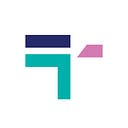Top 5 Vital Trends in UX and Product Design for Emerging FinTech Ventures
In the dynamic realm of financial technology (FinTech), the evolution of design is as constant as the industry itself. As the sector continues its trajectory of change, it is imperative for burgeoning FinTech startups to remain abreast of the latest User Experience (UX) and product design trends. Staying current not only ensures competitiveness but also facilitates the provision of optimal user experiences.
Within this discourse, we delve into the quintessential five trends that bear a substantial impact on the UX and product design landscape for FinTech startups in the year 2023. These trends are poised to elevate product design quality, enhance customer attraction and retention, and facilitate market differentiation amid the saturated FinTech sector.
Furthermore, this narrative will also navigate the key design challenges within the FinTech sector for the year 2023 and elucidate the strategies available to surmount these hurdles.
Without further ado, let us embark on this exploration.
Unveiling the Top 5 FinTech Design Trends of 2023
In 2023, the following design trends are at the forefront of the FinTech landscape:
The Elegance of Clean UI Design:
Clean UI design takes center stage by advocating for simplicity and clarity, thereby enhancing user navigation across intricate data sets and processes. This trend proves particularly pivotal for FinTech enterprises, given their engagement with multifaceted financial data. Noteworthy within this context is Robinhood, a stock trading app celebrated for its user-friendly interface. Designers can harness the principle of progressive disclosure to furnish users with vital information while preserving an uncluttered interface, using techniques like tooltips, dropdowns, modals, and more.

Personalization — Tailoring UX to Individual Needs:
Personalization in FinTech refers to the adept customization of the user experience based on individual preferences and requirements. It transcends mere customization by relying on data-derived insights to anticipate user needs, curtailing cognitive load and engendering heightened user engagement. Embracing personalization tailors user journeys ameliorates information overload, and establishes profound user-product connections.

Gamification for Enhanced Engagement:
Gamification fuses game-like elements into the UX realm, fostering elevated user engagement and motivation. This includes mechanisms like points, badges, leaderboards, and challenges. Acorns, a prime illustration, employs gamification through features such as “Found Money” rewards and the “Grow Your Own” challenge. The use of progress indicators aids users in gauging their financial progress in real-time, particularly impactful in domains like savings and investments.

Cultivation of Product Identity:
Product identity enunciates the creation of a unique and memorable brand persona, encompassing visual identity, tone, and resonance with the target audience. Establishing a coherent and consistent brand experience across touchpoints fosters trust, differentiation, and lasting user recognition.

Reinventing Security with Shuffling Keypads:
Rotating or shuffling keypads address the burgeoning need for heightened security. By altering key positions following each use, unauthorized access and fraud are thwarted. Melding this feature with biometric authentication bolsters security measures and user confidence.

Leveraging Social Proof for Credibility:
The social proof exploits the influence of others’ actions and opinions on user behavior. In the FinTech landscape, it substantiates product trustworthiness, reliability, and popularity. Utilizing customer reviews, expert endorsements, and testimonials showcases credibility and fosters user trust.

Design Challenges and Solutions in the FinTech Domain for 2023
Navigating the design intricacies of FinTech presents distinct challenges:
- Compliance Management: Regulatory compliance across diverse global markets poses a challenge. Solutions involve staying informed about ever-evolving regulations, close collaboration with compliance experts, user-centered design, testing and iteration, and future-proofing designs.
- Educating and Converting Users: Translating complex financial concepts and converting users necessitates clear communication, visual aids, gamification, and leveraging social proof.
- Effectively Displaying Complex Data: Visualizations, data simplification, contextual explanations, interactivity, and user testing streamline the presentation of intricate financial data.
- Streamlining Long Forms: Minimizing abandonment rates amidst lengthy forms involves segmenting forms, progress indicators, smart defaults, conditional logic, auto-formatting, and third-party integrations.
Concluding Remarks:
The realm of FinTech underscores the paramount importance of user experience and product design. Ensuring secure, user-friendly, and navigable products is pivotal. Collaboration with proficient designers can help FinTech entities navigate these challenges, crafting products that resonate with user needs and aspirations. Amidst the mosaic of intuitive interfaces, cutting-edge trends, and usability trials, skilled FinTech developers offer the guidance and expertise to bring your innovative FinTech application to fruition.
